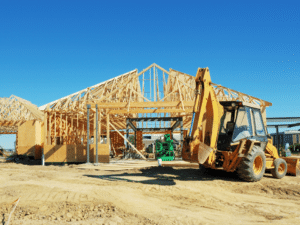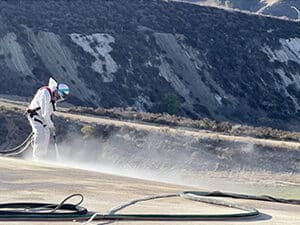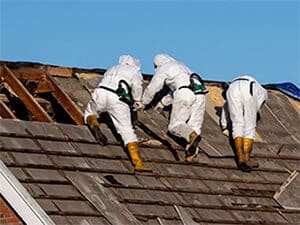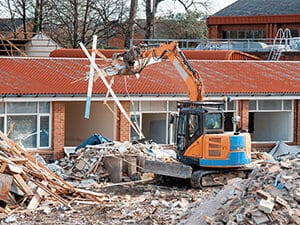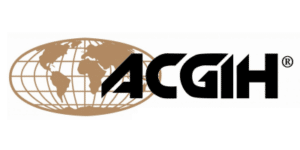Breathing Safely: A Look at Indoor Air Quality (IAQ) Across Federal Agencies and Defense

Explore the intricate web of regulations and groundbreaking initiatives spearheaded by federal agencies, the Department of Defense, the construction industry, and environmental consulting firms to ensure optimal indoor air quality (IAQ) and safeguard public health. Collaborative strategies and policies that ensure safe air in military and federal buildings, promote occupant well-being and IAQ standards advancement.
The U.S. Army defines good indoor air quality as “a favorable, productive atmosphere, and enables building occupants to experience a sense of well-being.” As of 2023, the Department of Defense (DoD) will spend more than $10 billion annually on the construction, renovation, demolition, and maintenance of military facilities. During these activities, the potential for releasing hazardous materials into the environment and neighboring buildings could impact building occupants’ indoor air quality.
Exploring the Potential IAQ Hazards in Military Construction
Hazardous materials associated with military construction projects pose complexities and require the precautions necessary to ensure environmental health. Across military bases and government-owned buildings, construction, renovation, and demolition activities typically include materials considered hazardous to indoor air quality, including a combination of airborne gases, vapors, particles, mold, or dust.
The most prevalent hazards in construction dust include airborne asbestos fibers, silica dust, lead, metals, and other dust particulate from cutting, drilling, and other construction activities. These particles can be entrained into neighboring building mechanical systems and enter through foot traffic, open windows, and doorways. Indoor air quality (IAQ) is critical for military personnel, residents, and individual’s health, comfort, and performance. Maintaining adequate IAQ prevents health problems for a healthy working and living environment.
Protocols are sets of principles, processes, and regulations used in the construction and maintenance of military facilities to analyze, monitor, maintain, and improve indoor air quality (IAQ). Regular testing, HVAC maintenance, ventilation needs, pollutant control methods, and emergency response plans are all outlined in these protocols and information:
- Relative Humidity: The amount of moisture in the air relative to its maximal capacity is measured by relative humidity (RH). Proper RH levels are critical for maintaining indoor air quality (IAQ) and preventing mold growth, dust mites, and indoor pollutants. RH levels in military buildings are typically between 30% and 60%.
- Ventilation: Proper ventilation is critical in military settings to preserve indoor air quality (IAQ), particularly in high-occupancy buildings or activities that generate pollutants. It entails mixing indoor and outside air, removing odors, dampness, and impurities, and creating a healthier interior environment.
- Air Filtration: Advanced air filtration systems, such as HEPA filters, are used in military buildings to remove particulate matter, allergies, and pollutants, improving indoor air quality.
- Pollutant Control: Indoor contaminants such as VOCs, CO2, and radon must be controlled at military buildings by monitoring materials, enforcing no-smoking policies, and addressing storage or other sources of contaminants.
- Monitoring and Assessment: Regularly monitoring IAQ indicators such as carbon dioxide levels, temperature, humidity, and pollutant concentrations is essential for military personnel to spot problems and take corrective action.
- Emergency Response: Protocols that limit hazards and preserve operational preparedness for military personnel should include preparations for reacting to IAQ crises such as gas leaks, chemical spills, and sickness outbreaks.
In the military, maintaining adequate indoor air quality entails following regulations, monitoring humidity and pollutant levels, and deploying appropriate ventilation, filtration, and control techniques. This strategy benefits military personnel’s well-being and effectiveness in various interior conditions.
Safeguarding Health and Environment: The Importance of Air Monitoring
The Department of Defense (DoD) places significant importance on air monitoring to ensure the well-being of military personnel, protect the environment, and maintain operational excellence. This practice involves the assessment of air quality in military facilities, training areas, and operational zones, identifying and mitigating risks to human health and the environment. Air monitoring serves as an early warning system, enabling prompt responses to deteriorating air quality, aligning with the DoD’s commitment to environmental and sustainability efforts.
Omega’s team can measure specific parameters to determine the air quality in a building. These parameters typically include CO, CO2, Temperature, Relative Humidity, and Particulates. More specifically, during construction activities, Omega can monitor for airborne particulate. During construction, monitoring is a beneficial tool to detect issues before building occupants are impacted and possibly suffer from exposure to airborne contaminants.
Omega solutions include:
- Indoor air quality evaluation
- Ambient air monitoring
- Indoor Environmental Quality Services
- Sick building syndrome evaluations
- Proactive IEQ management plans
- Customized IEQ training programs
- Operations and Maintenance
- Sewer Gas Monitoring/Hydrogen Sulfide (H₂S) Monitoring
Additionally, Omega’s expertise extends to laboratory services through multiple accredited facilities. These services encompass industrial hygiene and environmental analysis and analysis for microbial, asbestos, and lead substances, and more.
The Role of Federal Regulation & Standards
The Environmental Protection Agency (EPA) in the United States regulates IAQ through the Indoor Air Quality Act of 1991 to ensure efforts related to the causes, detection, and correction of contaminated air. These regulations establish pollution limits and guidelines for ventilation, emissions, and other IAQ-related factors. The other two organizations that implement and enforce standards and regulations that companies, contractors, and others must follow include The Occupational Safety and Health Administration (OSHA), the Centers for Disease Control and Prevention (CDC), The American Society of Heating, Refrigerating and Air-Conditioning Engineers (ASHRAE) and more. These federal regulations and organizations help ensure compliance with IAQ standards to protect the health of building occupants.
Understanding these mandatory guidelines is crucial for maintaining high indoor air quality (IAQ) in military facilities. Adhering to these regulations ensures mission readiness and a responsibility towards IAQ. These guidelines drive best practices and technologies, ultimately promoting a safer and more effective environment for military personnel.
Federal Initiatives in the Department of Defense Drive Progress and Security
The Department of Defense (DoD) specifically drives progress and ensures national security through federal initiatives, programs, security, and collaboration. The DoD is responsible for protecting domestic and international interests in the United States. Through this support, the DoD maintains military readiness, improves capabilities, and protects the nation from threats of terrorism, cyberattacks, and emerging technologies.
Federal initiatives invest in research and development (R&D), promote innovation, and support collaboration to advance and maintain an advantage over adversaries. Federal initiatives support training programs, infrastructure development, and strategic planning for armed forces to respond effectively to security issues. The Department of Defense (DoD) advances through programs to progress and improve security to preserve national defense, promote stability, and defend U.S. interests.
Omega has extensive experience consulting on and mitigating indoor air quality evaluations and conducting air monitoring. These assessments target complicated air quality issues to mitigate potential exposure to contaminants and hazards that cause an unhealthy environment.




